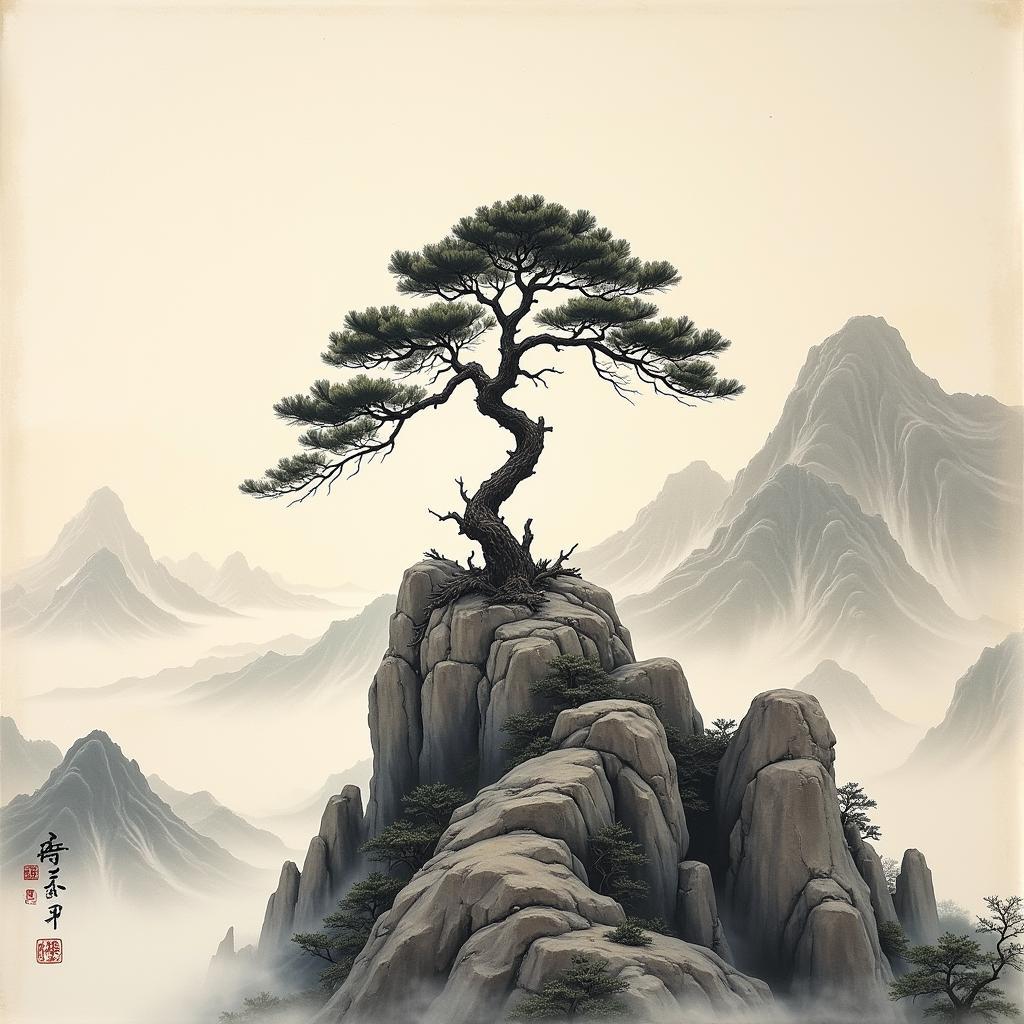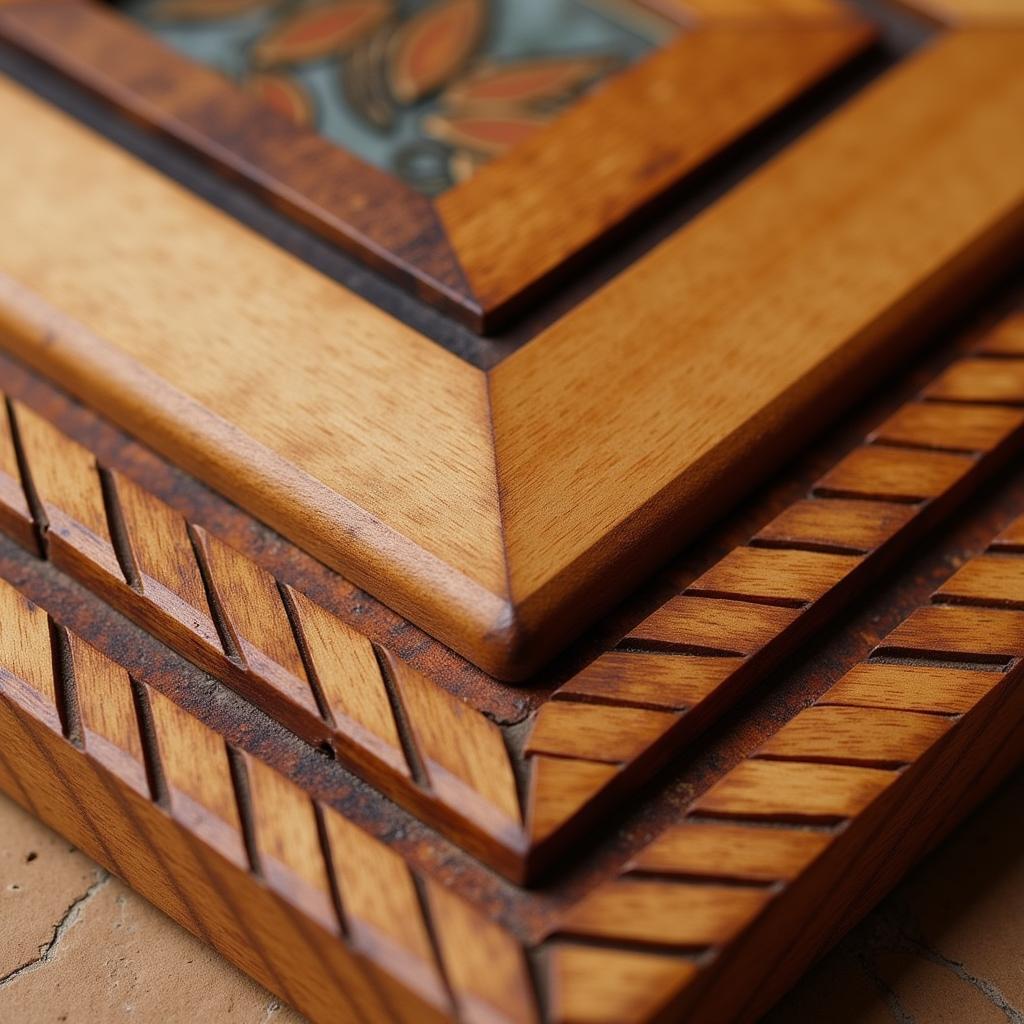The Enduring Allure of Cypress Tree Art
The cypress tree, with its distinctive silhouette and timeless elegance, has captivated artists for centuries. From ancient Eastern paintings to modern Western masterpieces, the cypress tree continues to inspire awe and ignite creativity. Whether rendered in ink on silk or oil on canvas, “Cypress Tree Art” offers a fascinating glimpse into the intersection of nature, culture, and artistic expression.
 Ancient Chinese Cypress Tree Painting
Ancient Chinese Cypress Tree Painting
Across Cultures and Continents: The Cypress as Artistic Muse
The cypress tree holds a prominent place in art history, transcending geographical boundaries and artistic movements. In East Asia, the cypress is revered as a symbol of longevity and resilience. This symbolism is evident in countless Chinese and Japanese paintings, where cypress trees often feature prominently in serene landscapes, embodying a sense of timelessness and spiritual connection.
 Van Gogh's Cypress Tree under a Starry Night
Van Gogh's Cypress Tree under a Starry Night
Meanwhile, in Western art, the cypress has been linked to themes of death, mourning, and the afterlife. This association is particularly evident in European cemetery art, where cypress trees are often planted as a symbol of immortality. However, the cypress also holds a more nuanced meaning in Western art, representing resilience, strength, and the enduring power of nature. This duality of meaning is beautifully captured in the works of Vincent van Gogh, whose iconic paintings of cypress trees pulsate with both darkness and light.
More Than Just a Tree: Deciphering the Symbolism of the Cypress
To truly appreciate cypress tree art, it is essential to understand the rich symbolism associated with this remarkable tree. Throughout history, the cypress has been imbued with layers of meaning, often varying across cultures and time periods. Here are a few notable examples:
-
Longevity and Endurance: In many cultures, the cypress tree is seen as a symbol of long life due to its remarkable lifespan. Some cypress species can live for hundreds, even thousands of years. This association with longevity makes cypress trees a popular subject in art forms that celebrate enduring legacies.
-
Resilience and Strength: The cypress tree is known for its ability to withstand harsh conditions. It can thrive in rocky soil, withstand strong winds, and resist decay. This resilience makes the cypress a powerful symbol of strength, overcoming adversity, and the enduring power of the human spirit.
-
Death and the Afterlife: In some cultures, particularly in the West, the cypress is associated with death and mourning. Its evergreen nature and upward-reaching branches have led to its connection to the afterlife and the hope of resurrection. This symbolism is prominent in funerary art and paintings that explore themes of mortality.
 Modern Abstract Cypress Tree Sculpture
Modern Abstract Cypress Tree Sculpture
Capturing the Essence: Techniques and Styles in Cypress Tree Art
Artists throughout history have employed a diverse range of techniques and styles to portray the cypress tree in their work. From the delicate brushstrokes of traditional Chinese ink painting to the bold impasto of Van Gogh’s canvases, the cypress has proven to be a versatile subject for artistic exploration.
-
Line and Form: The cypress’s distinctive silhouette, with its tall, slender trunk and flowing branches, lends itself well to being captured through line. Whether through the precise lines of a woodblock print or the expressive strokes of a charcoal drawing, artists have used line to convey the tree’s elegance and strength.
-
Color and Light: The interplay of light and shadow on the cypress’s foliage creates opportunities for artists to explore color and texture. From the deep greens and browns of its bark and leaves to the subtle variations in hue created by sunlight filtering through its branches, the cypress offers a rich palette for artistic experimentation.
-
Texture and Materiality: Beyond traditional painting and drawing, the cypress has also been rendered in a variety of materials, including sculpture, textiles, and ceramics. These diverse mediums allow artists to explore the tree’s tactile qualities and evoke its presence in three-dimensional space.
Experiencing the Enduring Beauty of Cypress Tree Art
Cypress tree art, with its rich history and diverse interpretations, continues to captivate and inspire. Whether you are drawn to the serene landscapes of East Asian art or the emotionally charged works of Western masters, exploring the world of cypress tree art offers a unique opportunity to connect with nature, culture, and the enduring power of artistic expression. For those interested in exploring “trees art work,” “cypress tree art” provides a captivating starting point. This specialized niche within the broader category of art depicting trees offers a focused look at how a single species has inspired artists across time and cultures. Similarly, those captivated by the ambiance of the Mediterranean might be drawn to “wall art mediterranean,” where cypress trees often feature prominently, adding a touch of timeless elegance to depictions of sun-drenched landscapes and ancient architecture. No matter your artistic preferences, the cypress tree’s enduring allure is sure to leave a lasting impression.
FAQs about Cypress Tree Art
-
What makes cypress trees a popular subject in art? Cypress trees are popular in art due to their distinctive shape, symbolism of longevity and resilience, and cultural significance across various societies.
-
Are there different meanings associated with cypress trees in Eastern and Western art? Yes, in Eastern art, cypress trees often symbolize longevity and resilience, while in Western art, they can also represent death and the afterlife.
-
What are some famous examples of cypress tree art? Some famous examples include Van Gogh’s “Starry Night” (featuring a prominent cypress tree), Katsushika Hokusai’s woodblock prints from the series “Thirty-six Views of Mount Fuji” (often including cypress trees), and Gustav Klimt’s use of cypress motifs in his landscapes.
-
Where can I find cypress tree art? You can find cypress tree art in museums, galleries, online art marketplaces, and even in nature photography.
-
What other art forms besides painting feature cypress trees? Cypress trees are found in sculptures, textiles, ceramics, photography, and even literature.
Need Help? Contact Us!
For any assistance or inquiries, please reach out to us at:
Phone Number: 02462573573
Email: danteum@gmail.com
Or visit us at:
Savico Megamall, 7-9 Đ. Nguyễn Văn Linh, Gia Thụy, Long Biên, Hà Nội 10000, Việt Nam.
Our customer service team is available 24/7 to assist you.


